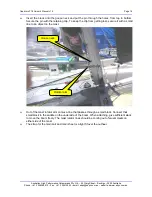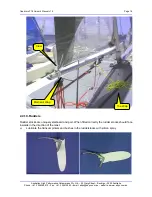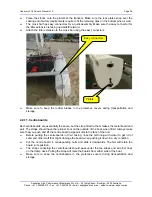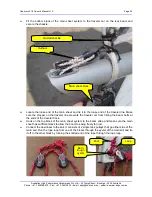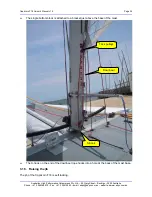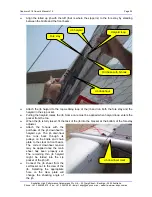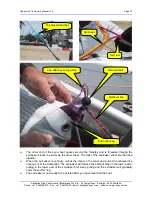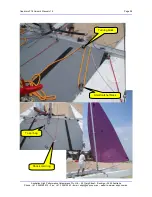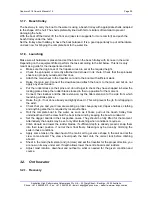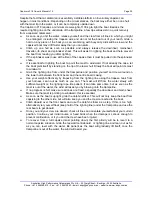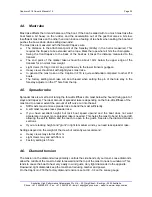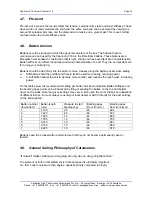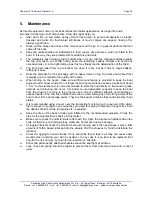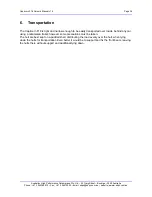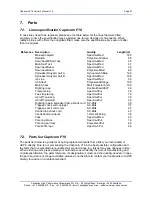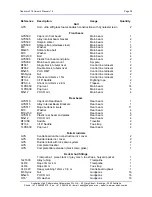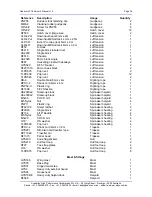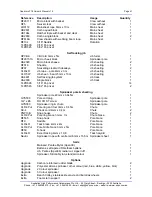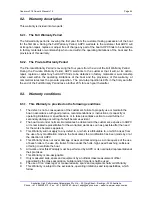
Capricorn F18 Owner’s Manual v1.2
Page 32
Australian High Performance Catamarans Pty. Ltd. – 50 Craig Street – Bendigo – 3550 Australia
Phone: +61 3 544369910 – Fax: +61 3 54412963 – email: [email protected] – website: wwww.ahpc.com.au
4.4. Mast
rake
Mast rake affects the trim and balance of the boat. If the boat is sailed with too much mast rake the
boat feels a bit heavy on the rudder, and the acceleration out of the gust becomes a bit slow.
Insufficient mast rake on the other hand can induce a feeling of lee helm when sailing the boat and
pushes the bows down when sailing downwind.
The mast rake is measured with the forward trapeze wire.
♦
The distance to the attachment point of the forestay (bridle) in the hull is measured. This
requires the trapeze to be extended with a rope. Mark the rope where it hits the chain plate.
♦
Swing the front trapeze to the back of the boat as it takes the distance measured to the
transom.
♦
The end point of the marker taken should be about 10cm below the upper edge of the
transom for a normal crew weight.
♦
Light crews (140 kg or less) can go all the way to the lower transom gudgeon.
♦
Heavy crews should sail with slightly less mast rake.
♦
In general the mast rake on the Capricorn F18 is quite substantial compared to other F18
boats.
♦
The factory setting mast rake will be achieved when setting the pin of the fore stay in the
forestay adjuster on the 3
rd
hole from the top.
4.5. Spreader
rake
Spreader rake is a method of tuning the fore-aft stiffness of a mast below the hound (fixing point of
stays and trapeze). The ideal amount of spreader rake is depending on the fore-aft stiffness of the
mast and to a lesser extent the amount of luff curve cut into the sail:
♦
Stiff masts require more spreader rake to bend the mast sufficiently.
♦
A soft mast requires less spreader rake.
♦
If you have excellent height, but lack boat speed upwind and the boat does not want
accelerate in a gust, more spreader rake is needed. This helps the mast to bend fore and aft,
allowing the sail to flatten and the leech to open in the gusts. See also the diamond tension
sections.
♦
If you are lacking height and “grunt” in light to medium winds, you need less spreader rake.
Settings depend on the weight of the crew but currently we recommend:
♦
Heavy crews may start at 25 mm.
♦
Light crews may end with 55 mm.
♦
Factory setting is 35 mm.
4.6. Diamond
tension
The tension on the diamond wires primarily controls the side bends of your mast. Loose diamonds
allow the middle of the mast to bend to leeward and the top of the mast to hook to windward. This
tends to cause the boat to heel very easily in wind gusts. Very tight diamonds do the opposite.
Downwind, tight diamonds keep the mast bent reducing camber and power.
On the Capricorn F18 the factory diamond tension is set at 30 - 34 on the Loose gauge.

